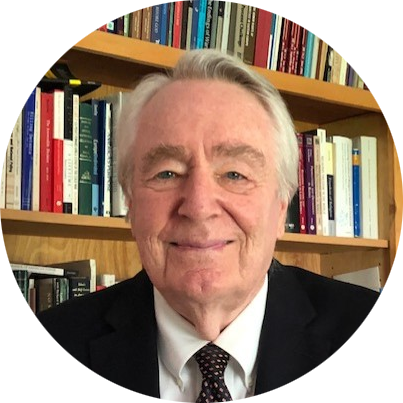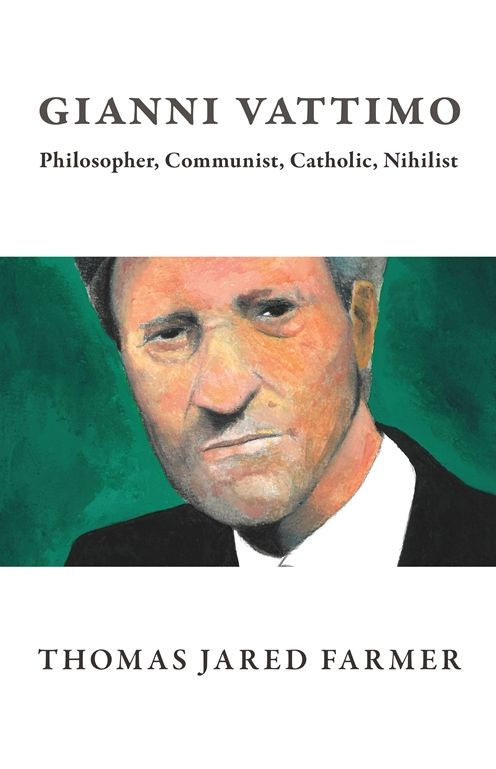
Secularity, Dignity, and Human Rights: A Review of Human Rights in a Divided World by David Hollenbach, S.J.
David Little
View from the Arc de Triomphe in France by Pierre Blaché (CC0 1.0.)
In a definitive study of the origins, drafting, and intent of the Universal Declaration of Human Rights, Johannes Morsink calls attention to a deep, widespread division of opinion within religious communities toward human rights (285). He points out that representatives of most of the religious traditions that participated in the drafting of the Declaration—whether mainstream Protestants and Catholics, or Jews, Hindus, Buddhists and Muslims—strongly supported it in spite of the fact that it makes no reference to any religious authority. That put them all at odds with “fundamentalist” members of their communities who believed that the rights guaranteed in the declaration required a religious foundation, something that should, in turn, be the basis for interpreting and applying those rights. If such a foundation is missing, human rights ought to be regarded with considerable hostility (25).1“While [liberal Protestants] were proud of having played a role in advancing a human rights agenda within the [UN], and had no trouble recognizing that the diversity of the UN’s constituencies made predicating human rights on a narrowly Christian foundation inappropriate, evangelicals castigated the UN’s Universal Declaration of Human Rights because, in the words of the Christianity Today editor, Carl F. H. Henry in 1951, the declaration “incorporates no references to a supernatural Creator, nor does it anywhere assert that God endows mankind with specific ‘rights’ and ‘duties’” (David A. Hollinger, After Cloven Tongues of Fire: Protestant Liberalism in Modern American History (Princeton: Princeton University Press, 2013)), 25.
This was not an incidental matter in the drafting process. One delegate moved that Article 1 of the Declaration be stated as follows: “Created in the image and likeness of God, human beings are endowed with reason and conscience…,” and another moved to include these words in the preamble: “Whereas recognition of the inherent dignity and of the equal and inalienable rights of all members of the human family based on man’s divine origin and immortal destiny, is the foundation of justice and peace in the world…” The proposals stimulated intense debate, but were finally dismissed without a vote, signaling, to Morsink, general agreement on an assumption shared by most drafters, including many of the religiously inclined, that certain “basic truths of morality” are universally available to and binding upon human beings regardless of religious orientation or conviction, and thereby constitute the grounds for “a secular declaration.”
Though David Hollenbach devotes much of Human Rights in a Divided World to an exposition of what he believes is a distinctive Roman Catholic contribution to the advancement of human rights, he clearly favors the view of the majority of religiously sympathetic drafters that human rights should be embraced and promoted independent of any official religious foundation, or, for that matter, any other comprehensive doctrine espousing a particular way of life. Drawing on the Papal Encyclicals, Pacem in Terris (1963) and Dignitatis Humanae (1965), which, as the product of the Second Vatican Council, substantially reversed long-standing church opposition to the idea of universal natural rights, Hollenbach grounds his approach to human rights in the idea of human dignity, an idea that is, to be sure, central to Catholic doctrine, but also rests on “secular warrants” (25). As Hollenbach further observes, “The Catholic tradition holds that human dignity can be recognized by all human beings and makes claims upon all, both Christian and non-Christian.” It is consistent with long-held natural law theory teaching that “ethical responsibilities can be grasped by human reason and philosophical reflection on what it is to be human.”
We shall soon evaluate the adequacy of this way of justifying human rights, but for now it is important to understand the role the secular view—that “human dignity has a certain autonomy from the explicitly religious beliefs of Christianity,” as he puts it—plays in Hollenbach’s approach. For one thing, it is a basis upon which Christians can “work together with those who are not Christian in the effort to promote greater respect for equal human dignity” (125). For another, it provides self-standing common ground in support of political and legal authority for enforcing human rights among people of differing religious and nonreligious worldviews. Citing John Courtney Murray, Hollenbach declares that governments should be “denied all competence” in determining and enforcing religious truth or error, (81) and he emphasizes that, for Murray, the standards of public order, which governments ought to protect, are based on a minimal level of morality that does not depend on religious authority.
In developing this secular view, Hollenbach invokes Kant and Aristotle. Kant supplies the central idea that dignity means treating others as ends in themselves in accord with the conditions of rational thought, and Aristotle leads the way to discovering “basic common standards of dignity” (193) by observing inductively what people across cultures and religions come to regard as the fundamental features of right and wrong conduct. This approach was especially important in regard to human rights. Following Morsink, Hollenbach contends that the drafters decided which basic rights should be enshrined and protected by carefully proceeding to catalogue Nazi violations (53n24)—in effect, thereby, deriving “rights from wrongs” (58). Rights were identified “from concrete experiences of human atrocities that all could see as morally wrong, and also from shared experience of human needs that all [could see] should be met. Induction from experience of harms to be avoided and needs to be met, not deduction from philosophic, ideological, or religious principles, led to the Universal Declaration” (53).
Accordingly, the harms to be avoided and the needs to be met, as spelled out in the Declaration and in the two separate treaties on civil and political rights and economic, social, and cultural rights legalizing those rights, follow, according to Hollenbach, from the idea of human dignity.
Without ever yielding this commitment to a “secular declaration,” Hollenbach proceeds in much of his book to engage in what might be called supplementary religious commentary on the practical interpretation and implementation of human rights around the world. He addresses subjects like poverty, religious freedom, immigration, the treatment of women, and the international use of force in reference to an understanding of human dignity. He suggests that a proper Catholic perspective based on dignity, presumably offered not as legally binding doctrine but as a contribution to intercultural dialogue, can, for example, help find common ground with human rights views in Asia and Africa that overcome objectionable Western biases favoring excessive individualism and opposing the importance of community and social relationships, as well as a stronger emphasis on economic and social opportunities, along with civil and political protections.
Hollenbach’s elaboration of the ways the idea of dignity relates to various realms of human experience, particularly as informed by the Catholic tradition he represents so well, is highly instructive and secures for the idea a central place in intercultural deliberation on the interpretation and application of human rights. However, whether his secular notion of human dignity fills quite the foundational role he proposes is open to debate.
To begin with, the exact status of the idea of dignity in the human rights corpus is inconclusive. “Inherent dignity” and “the equal and inalienable rights of all members of the human family” are mentioned in the preamble to the UDHR without specifying their relationship. For what it’s worth, the preamble states, in fact, that it is disregard and contempt for human rights that “have resulted in barbarous acts which have outraged the conscience of mankind,” not “disregard for dignity,” as Hollenbach says (18). Again, the relationship is left undetermined in Article 1, as well: “All human beings are born free and equal in dignity and rights.” In a debate among drafters over the desirability of using the word dignity, Eleanor Roosevelt defended it to emphasize that every human being is worthy of respect as a way of explaining “why human beings have rights to begin with” (146). That is a puzzling statement, since the text says human beings are born with both dignity and rights.
To be sure, in the International Covenants on Civil and Political Rights and Economic, Social, and Cultural Rights it is stated that “these rights derive from the inherent dignity of the human person,” but no explanation is offered. Indeed, in discussing Article 1 of the UDHR, Morsink reports that the drafters thought human beings “have…inherent dignity because we are born with ‘equal and inalienable’ rights” (293) suggesting that dignity derives from rights, not the other way around. But that statement is no less puzzling than Ms. Roosevelt’s, given the wording of the text, which does not give priority to either dignity or rights.
Moreover, there is good reason to believe that the very notion of dignity served, in the minds of the drafters of the UDHR, simply as a “placeholder” for a theory of how human rights are justified. “Everyone could agree that human dignity was central, but not why or how,” Christoper McCrudden observes. The word gave the pretense of common agreement by obscuring the fact that it actually represented “different content for different people.”2Christopher McCrudden, “Human Dignity and Judicial Interpretation of Human Rights,” European Journal of International Law, 19.4 (September 2008), at Section 3.A. “Finding Dignity as a Placeholder in the UDHR and Other Human Rights Texts.” On the basis on an impressive review of the use of the idea of dignity in judicial interpretation around the world, McCrudden finds no consistent substantive content to the term, though he discovers it has three highly abstract minimal common features: human beings have intrinsic worth; that worth should be recognized and respected by others; and “the state should be seen to exist for the sake of the individual, and not vice versa.” The idea of dignity also serves, he says, to signal three areas of special judicial perplexity: how to balance rights with one another and with other values; how far local cases should be guided by international human rights standards and how far by local and national standards; and, how far rights texts, whether national, regional, or international, should be dispositive in judicial rulings, and what is the correct reaction when the text appears not to support judicial intervention. The implication of this conclusion is critical: The drafters correctly intuited that if human rights are legitimately to be enforced against violators and defectors, there must be some reason to believe in the transnational moral authority of human rights. However, if governments are free to choose whatever they mean by dignity as the foundational value, then efforts to enforce rights against offenders lack such authority and become simply a naked power struggle of creed against creed.
In the task of finding a foundation for human rights, Hollenbach makes a strong case for a secular justification. Privileging one religion over others as the basis for a code of universal rights, intended as legally binding, would on its face undermine the prospects for universal cooperation. More importantly, grounding such a code in one or more religious worldview would defy compelling arguments in favor of a profound conceptual gap, whatever one’s religious persuasion, between conscience and coercion, arguments long endorsed, among others, by the Catholic tradition. Finally, there is the intriguing suggestion that the drafters derived rights from wrongs—that the rights enumerated in the UDHR were inferred “from concrete experiences of human atrocities that all could see as morally wrong, and also from shared experience of human needs that all [could see] should be met,” to recall Hollenbach’s words.
It is the kind of appeal to the “dignity of persons” as the ground of human rights that, I suggest, is the problem. Hollenbach’ s central argument (191-194) which expands on Kant and Aristotle, may be summarized in two steps.
- Following Kant, human beings possess self-consciousness and a capacity for self-transcendence enabling them to know things, make choices, and form relationships, and to conceive of other persons as having the very same “prerequisites of human dignity.” Because the prerequisites are central to what it means to be a human being, they “give rise to moral claims” obligating human beings to respect the prerequisites in one another by treating each another “in ways that sustain or at least [do] not destroy” them.
- The moral claim that these requirements command respect, however, is too abstract, as is true in general of Kant’s ethics. It does not “adequately specify what these culture-transcendent moral rights or obligations might actually be.” By looking more closely at human experience in the spirit of Aristotle, it is possible, as the drafters of the UDHR did, to infer a more explicit and practicable list of protections of the needs of the mind and spirit, but also of the material and physical needs of the body, which are equally essential prerequisites of human dignity.
Despite cultural differences, Hollenbach concludes, “it does not seem impossible that all practically reasonable people can agree that human dignity means not being enslaved, not being politically repressed, or not starving when alternative conditions are genuine possibilities. The quest for standards of a common morality and for a universal human rights ethic is the effort to identify prerequisites of human dignity such as these” (193).
The problem with positing dignity as the foundational principle of human rights is already suggested in this concluding comment. To say “human dignity means” not being enslaved, repressed or avoidably starved (as well, no doubt, as not being deprived of other human rights) is to extend logical priority to rights against being so treated in determining the meaning of dignity. If we can come to know the meaning of dignity only by first establishing the nature and basis of rights against certain forms of mistreatment, then we shall need to give prior attention to that subject as the key to understanding dignity, not the other way around.
In exploring the nature and basis of rights, we discover the first critical clue in the common character of the violations Hollenbach cites. Enslavement, political oppression, and avoidable starvation are all expressions of arbitrary force, force in service of the maleficent purposes of self-serving ruling groups. Such practices lay down the template for what constitutes the primary nature of human rights, namely, the right to use defensive or reasonable force—force duly constrained by the rules of necessity and proportionality—in protecting against the exercise of arbitrary force. The preamble to the UDHR says as much: If people are “not to be compelled to have recourse, as a last resort, to rebellion against tyranny and oppression, …human rights should be protected by the rule of law.”
If we understand rights as enforceable entitlements, then, we learn, very much in line with the drafters’ procedure of deriving rights from wrongs, what those entitlements are by cataloguing the abuses of force at the hands of tyrants and oppressors, by enumerating a set of rights designed to thwart those abuses ever after, and then by demanding that governments—entrusted with the regulation and administration of force constrained by the rules of necessity and proportionality—protect that set of rights by the rule of law.
The foundational universal moral entitlement underlying human rights is the right of self-defense, known in the natural rights tradition as “the greatest of rights” (314). It is the right to use defensive force in two ways: (1) to resist arbitrary force, namely, the infliction of death, injury, impairment, pain, deprivation or neglect upon defenseless people for self-serving reasons, and, (2) to institute and enforce a set of rights, constructed in response to the manifest abuses of exercising arbitrary force and designed to prevent their recurrence.
Accordingly, I agree, up to a point, with Joel Feinberg who thinks of the idea of human dignity as meaning respect for the rights of others, a position, obviously, that accords prior importance to the idea of rights (151). It does seem clear that we could not witness enslavement, oppression, or avoidable starvation and say the victims were being treated with dignity, showing that respect for rights is a necessary condition for using the term.It also seems likely, though, that we mean more by the term than simply respect for basic human rights, such as displaying certain forms of consideration, speaking in a certain way, behaving with a certain deference. Beyond that, it makes sense, following Hollenbach, to identify general features of dignity—capacities of mind and spirit, and general expectations concerning provision for the material and physical needs of the body, and then to see, as he does so thoughtfully, how those characteristics can lead to a richer understanding of human rights as applied to particular areas of human experience. Perhaps the idea can also be helpful in legal proceedings in the way McCrudden suggests. In short, I think the idea of human dignity rests inescapably on the respect for rights, but constitutes much more than that. ♦

David Little is at present a research fellow at the Berkley Center for Religion, Peace, and World Affairs at Georgetown University, having served before that as Professor of the Practice in Religion and International Affairs at Harvard Divinity School, and as Senior Fellow in Religion, Ethics, and Human Rights at the United States Institute of Peace. In 2015, Cambridge University Press published Essays on Religion and Human Rights: Ground To Stand On, and a book of responses to his work by colleagues and former students: Religion and Public Policy: Human Rights, Conflict, and Ethics, ed. by Sumner B. Twiss, Marian Gh. Simion, and Rodney L. Petersen.
Recommended Citation
Little, David. “Secularity, Dignity, and Human Rights: A Review of Human Rights in a Divided World by David Hollenbach, S.J.” Canopy Forum, January 16, 2025. https://canopyforum.org/2025/01/16/secularity-dignity-and-human-rights-a-review-of-human-rights-in-a-divided-world/.
Recent Posts










